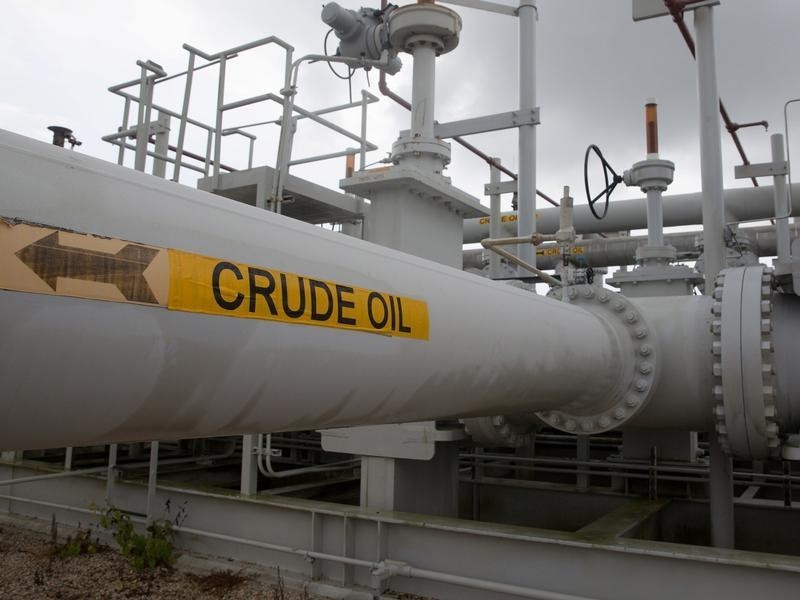By Ketki Saxena
Investing.com – Oil Prices rose to nearly $125/barrel on early Tuesday, as the EU announced a partial ban on Russian oil as part of a sixth package of sanctions against Russia.
The EU will ban two-thirds of its current imports from Russia, including all seaborne deliveries, while allowing pipeline shipments to continue as a concession negotiated by Hungary.
But the impending EU embargo on Russian oil is only part of the story behind soaring crude oil prices: other factors behind low global supply include tight inventories and high demand in the U.S., a steadfast maintenance of low output from OPEC, and the Chinese reopening as the country begins to ease its nearly two month lockdowns.
Meanwhile, high gasoline prices in the U.S. have had the administration begging oil from interesting allies, even as the country continues its ban on Russian crude: the Biden administration is now easing sanctions on Venezuela, once accused of human rights violations, and currently working with Iran to revive its failing oil industry.
Despite the escalation of sanctions on Russia , the question remains whether the energy embargos are working: China and India, amongst others, continue to import (relatively) cheap Ural Crude in an effort to provide affordable energy to their vast populations.
Here’s an overview of what’s going on in some of the major importing and exporting countries, and a few of the factors driving current volatility in crude.
E.U. - Russia
European Union leaders agreed on Monday to ban seaborne crude oil six months from adoption. Shipments of oil through the mammoth Druzhba pipeline to central Europe will continue until a solution can be agreed upon to suit Hungary and other landlocked nations. Refined petroleum products are set to be halted in eight months.
The agreement aims to cut EU imports of Russian crude by 90% by the end of the year.
Even prior to the legal ban, many European companies had voluntarily imposed bans on Russian oil, leading to a record number of Russian crude oil cargo ships struggling to find buyers. Bloomberg data shows that Europe is currently importing 770,000 barrels a day of Russian crude, compared to 1.4 million barrels a day in January prior to the invasion of the Ukraine.
OPEC+
Underscoring market tightness, OPEC+ (of which Russia is a key member) steadfastly refuses requests by Western leaders to increase output, and will likely do so again at its Thursday meeting. OPEC sources confirm the bloc is unlikely to change existing plans to raise the July output target by 432,000 barrels per day.
With Russia an important part of the alliance, the decision to hold back output is becoming increasingly fraught with politicism. However, analysts note that several members of the bloc have recently fallen short of already modest quotas, and may lack the capacity to increase production further.
The U.S.
Supply also remains tight in the U.S., which coupled with soaring demand and high exports have led to dwindling inventories.
Last week, the U.S. government announced U.S. crude stockpiles fell 1 million barrels last week. U.S. refiners drove processing activity to their highest level since before the coronavirus pandemic started reflecting heavy demand, driven in part by the Memorial Day weekend which kicked off the beginning of the U.S. driving season.
Refiners picked up the pace of processing, boosting capacity use to 93.2%, its highest since December 2019 to meet heavy demand, especially from overseas. Refined product exports rose to more than 6.2 million barrels per day last week.
Venezuela
The U.S. imposed oil sanctions on Venezuela under the Trump administration in 2019 due to ongoing human rights violations by President Nicolás Maduro. In may, the White House announced it was reconsidering its restrictions on Venezuelan oil.
The U.S. has now begun to ease its sanctions on the oil-rich country. Biden will now allow Chevron Corp. (NYSE:CVX) to negotiate its oil license with state-owned oil producer Petroleos de Venezuela, although no further oil drilling or additional revenues for the Maduro government will be permitted.
Interestingly, Venezuela is also working with another heavily sanctioned country, Iran to help revive its oil industry.
China
Beyond supply constraints in the U.S., Russia, and OPEC+, an expected rebound in demand is also driving tightness in the market, as China looks set to ease Covid-19 lockdowns.
China is the largest importer of crude in the world, and its long lockdowns have resulted in a dramatic drop in industrial and consumer demand for crude oil. Chinese crude imports for January-April fell 4.8% versus the same period last year to 170.89 million tonnes, or about 10.4 million barrels per day.
After nearly two months of lockdowns, China’s key economic hub of Shanghai is set to reopen from Wednesday, allowing manufacturers to resume activity, retail establishments to reopen, and residents allowed to return to work.
